GOP bill makes 14 million acres of public land in NM ‘eligible’ for sale, according to new analysis6/18/2025 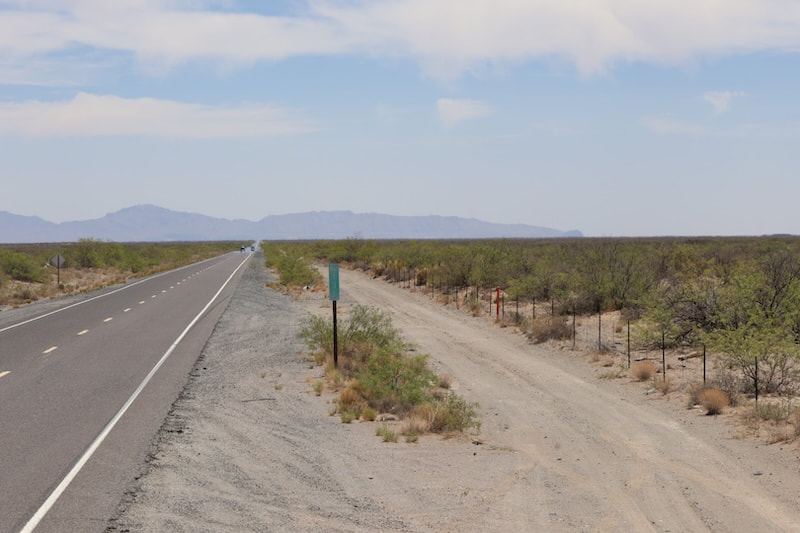 Highway 9, with federal grazing land on either side, in Southern New Mexico pictured in May 2025. The Senate reconciliation bill making progress this week makes more than 250 million acres “eligible” for private sell-offs, including federal grazing land, according to an analysis by the Wilderness Society. The bill mandates up to 3.2 million acres of public land be disposed of. (Photo by Patrick Lohmann / Source NM) The federal budget reconciliation bill making progress in the United States Senate this week makes more than 21,000 square miles of public land in New Mexico “eligible” to be sold to private buyers, according to the Wilderness Society. The group, which opposes efforts to sell off public lands, geographically analyzed lands across the West that could be subject to a land sale, based on criteria laid out in the bill. Across the West, several hundred million acres of land would meet the criteria, according to the group, though only a tiny fraction of that would be sold, per the bill text. The bill mandates the “disposal” of between .5% and .75% of all United States Forest Service and Bureau of Land Management land across the West, which means up to 3.2 million acres or 5,000 square miles. According to the Wilderness Society’s analysis, about 6.5 million acres of U.S. Forest Service land in New Mexico would be eligible, in addition to about 7.8 million acres of BLM land. According to a map the society created, huge swathes of BLM land east of Las Cruces also would be eligible, along with areas of the Gila National Forest and Santa Fe National Forest. This map visualizes the 250+ million acres of public lands eligible for sale in the Senate budget reconciliation package. Take action: Tell your senators to vote no on the reconciliation bill. Learn more about the bill and find the data here. Map and analysis by The Wilderness Society using source data from BLM, USFS, USGS, NPS, and SENR reconciliation bill text as of June 16th 2025.
The mandate does not apply to national parks, monuments or other “federally protected land” like historic sites, wildlife refuges or fish hatcheries. It also excludes land that is “subject to valid existing rights.” But it’s no longer clear what that last provision means, said Wilderness Society spokesperson Max Greenberg in an interview Tuesday with Source New Mexico. Until this weekend, “valid existing rights” applied to federal lands with grazing leases, but lawmakers struck the definition, according to Politico and leaked drafts the organization obtained. After lawmakers removed that definition, the Wilderness Society revised its estimate to 250 million acres of federal land eligible for sale, up from 120 million acres, Greenberg said. The figure reflects the sheer amount of federal land now leased for grazing across the West, he said, and also the secrecy in the legislative process. “This played out with kind of secret updates over the weekend and this very non-transparent, strange process where we have to work out what is actually implicated in the bill,” Greenberg told Source. “All of this argues for just [a] better process and better transparency… It’s been misleading the way the bill was initially framed by Republicans as this kind of very surgical effort to dispose of a few marginal parcels here and there.” U.S. Sen. Mike Lee (R-Utah), chair of the Senate Natural Resources Committee, has said the mandated selloff would serve as a way to discard remote and difficult-to-manage public lands and turn them into housing developments. He made the pitch last week in a video he released, featuring Interior Secretary Doug Burgum and Housing and Urban Development Secretary Scott Turner. “Washington has proven time and again that it can’t manage this land. This bill puts it in better hands,” Lee said in the video. A previous version of the bill in the House contained about half a million acres of specific parcels of federal land to lose federal protections, but House lawmakers removed that language after pushback, including from U.S. Rep. Gabe Vasquez (D-NM). Vasquez called it a “huge victory” at the time.
1 Comment
Emergency departments have reported increased cases of infants and young children coming in contact with substances like fentanyl, methamphetamine or even residue on household surfaces or drug paraphernalia. Some of these exposures have resulted in death. For curious toddlers, anything left within reach can be a danger.
Simple steps can help protect little ones:
If you suspect a child has been exposed, use naloxone — you can give naloxone to people of all ages — and call 911 immediately. Protecting children starts with supporting parents and caregivers. Compassionate care, harm reduction services and family-centered treatment options are available to help parents heal while keeping children safe. At Presbyterian Española Hospital, we provide confidential services including individual substance use disorder counseling, referral for medication management and connections to community resources for adults and adolescents (age 13 and up). If you or someone you know is struggling, call us on 505-367-0340. Am I just a late bloomer? By Zach Hively Oh, did I ever have grand aspirations. I am sitting outside right now, right where—starting six years ago—I imagined a modest if obscenely bountiful garden flourishing in this dry, inhospitable patch of sand. A lot of love and hard work, and as always some make-or-break luck, built this space into what I see before me today: A dry, inhospitable patch of sand. Which is not to say I have failed entirely as a gardener. Here, let me tally for you all the delicious things I have enjoyed—cumulatively, over these last six years—from lo these many efforts:
And all this—except the potato—came from container gardening. Which is still hard! I think the ground underneath the containers is a bad influence. Granted, I have had to deal with FACTORS. I’ve ranted before about the pack rats who chew anything that grows here down to the stubs. They make me think it was rabbits. Spoiler: it is never rabbits. Rabbits do not build modest yet obscenely bountiful nests in the engine compartment of my pickup truck. Nor do they festoon these nests with intact, uneaten garden stakes. (Alongside spine-in prickly pear pads.) Never mind the pack rats. And never mind that they intimidate me into pretending they don’t exist. I also have to contend with water. I grew up in one of those increasingly rare American cities with potable water straight from the tap. It was either entirely safe, or we didn’t know any better because of the silencing power of the local military-industrial complex. Either way! We all also watered our plants with it, and the plants generally survived. So I, privileged and oblivious, watered my first-year garden straight from the groundwater well. Not only was the water abundant, it was unmetered. It was also not discolored. But everything—and I mean everything, except the pack rats—died. Turns out, plants do not thrive on leaded groundwater. So I installed a couple rain barrels. You, astute reader, may see the fault in this plan faster than I did: Rain barrels require—and this is backed by empirical science—rain. Which we get! Sometimes! But do you know when plants least need watered? Right after it rains. Thus, I hoarded the water in those barrels, because watering my modest yet increasingly obscenity-generating garden used up their contents in about two goes. I drew out the supplies. Asked my lingering plants to go on austerity. (I had moved on from most delusions of edibility at this point. We were just holding out for some hardy flowers.) Ultimately I upgraded from the original two sixty-gallon barrels to an additional pair of 250-gallon beasts. One really good downpour fills them right up. Yet I, scarred and hardened now, as burned as my cat mint plants in July, still limped my plants along. I’m so averse to running out of water that I feel better when I leave the tanks full. All the while, nature taunts me: the wild datura that sprouted all on its own by the front door—and which I never once tended to—provides a full 96% of our annual flowerage, with blooms as big as my face. This year, I gave up. I didn’t plant a single seed. No trips to the nursery center. No starts, no plugs, no offshoots. I water the trees (which have not grown but also have not died) mainly when I remember to, which is seldom, because I have handed their fate over to Fate. Which means, of course, that the garden has picked up the slack. Every surviving sage plant has shot out new leaves after overwintering without a darn bit of assistance from moi. I have what I distinctly believe to be a fourth carrot growing. The containers are getting bushy with marigold greens and two rosemaries that just won’t quit. And then there’s these bad boys: Bad girls? Bad plants. Good plants? Whatever. These flowers did it all by themselves. I can’t even tell you when I last put hollyhock seeds in this trough or anywhere else. It was not in a recent year.
I think there are lessons to be learned here. Possibly about relinquishing control. Definitely about the transformative beauty of giving up. So remember, kids: If at first you don’t succeed, quit planting seeds. Don’t try so hard, or at all. And if you ever come over to see my flowers, best bring your own food. SANTA FE – No cost back-to-school vaccinations are available from dozens of medical providers statewide.
The annual Got Shots special immunization clinics will be held between June 14 – Aug 30 for all children 0-18 years-old. The New Mexico Department of Health (NMDOH), the New Mexico Immunization Coalition, the New Mexico Primary Care Association, along with managed care partners Blue Cross and Blue Shield of New Mexico, Molina Healthcare, Presbyterian Healthcare Services and United Healthcare are making sure New Mexico’s children get their scheduled immunizations on schedule. "Vaccines are one of the greatest tools we have to protect children’s health. Safe and effective immunizations have dramatically reduced – and in some cases, eliminated – dangerous childhood diseases that once claimed thousands of young lives in the United States every year,” said Andrea Romero, NMDOH Immunization Program Manager. Participating providers – such as NMDOH public health offices - will offer immunizations to any child, regardless of whether they are a patient or have insurance, as part of Got Shots. Some providers hold clinics on weekends or evening hours to accommodate parents’ busy schedules. Parents should call ahead to the clinic to see if an appointment is needed. Parents need to bring their child’s shot record, and if they have insurance, their Medicaid or private health insurance card. Immunizations are provided at no cost to parents regardless of insurance. This year, 68 public health offices, community health centers, and private practices are participating in the Got Shots campaign. Click here to see the current School and Childcare Immunization Requirements. A map and list of additional statewide locations participating in Got Shots is available on the New Mexico Immunization Coalition page. For immediate release
ESPANOLA, NM — The inspiring short documentary MOVING ARTS | Setting Hearts Ablaze by the award-winning production company Docufilms is gaining international recognition for its powerful portrayal of how art can transform young lives. The film, which features the non-profit Moving Arts Española, has been named a 2025 Cannes World Film Festival Finalist, a New York International Film Award Semi-Finalist, and the Best Documentary Short winner at the Touchstone Independent Film Festival. Additional accolades include: ● Official Selection – Los Angeles Independent Shorts Awards ● Official Selection – East Village New York Film Festival ● Official Selection – IndieX Film Fest ● Best Original Score - TELLY Awards ● Best Documentary - TELLY Awards ● Best Social Impact - TELLY Awards The documentary captures the essence of Moving Arts philosophy that “Art is Medicine”, illustrating how creativity, discipline, and compassionate mentorship guide children from fear and hurt toward safety, trust, and healing. Through a vibrant blend of dance, music, painting, photography, video production, gymnastics, and digital art, the organization provides a nurturing environment for self-expression, resilience, and growth. “We were honored when DocuFilms approached us about featuring Moving Arts in their newest documentary,” said Roger Montoya, Creative Director and Co-Founder of Moving Arts. “This project beautifully captures the creativity, dedication, and impact of our program, and we were thrilled to see our students shine. When they recently shared the trailer with us, we were blown away by their innovative approach to showcasing the magic of Moving Arts.” MOVING ARTS | Setting Hearts Ablaze features deeply moving interviews, stunning cinematography, and a narrative piece created by former Moving Arts students highlighting the growing challenges in Española, where up to 60% of students in the Rio Arriba County school district are being raised by grandparents or extended family. “It was beautiful to hear the voices of our alumni telling our story and talking about the impact Moving Arts has had on their lives,” said Salvador Ruiz, Executive Director and Co-founder. The documentary also showcases a powerful dance performance by San Ildefonso’s Than Povi Martinez, reflecting the limitations of conventional education and the liberation that creative practice provides. At the heart of the film are founders Roger Montoya, a 2019 CNN Hero, and Salvador Ruiz, a 2022 Univisionario, along with a passionate team of educators, alumni, and volunteers. Together, they have created a thriving community where youth are empowered to heal, grow, and lead through experiential learning and artistic exploration. Docufilms, known for its emotionally rich and socially impactful documentaries such as Movement, BIG little, Season Two, and Eating History | A Taste of New Mexico, brought its signature storytelling approach to this heartfelt project. “Moving Arts is a powerful example of what it means to uplift a community through creativity, discipline, and compassion,” said Docufilms director, Michael Campbell. “It was an honor and a privilege to witness the transformative impact of their work and to help share their story with a broader audience.” MOVING ARTS | Setting Hearts Ablaze is more than a film—it’s a celebration of community, creativity, and the unshakable belief that every child deserves a place to heal, grow, and thrive. For more information about Moving Arts or to support youth leadership initiatives, visit movingartsespanola.org Moving Arts was approached by Docufilms following the news coverage that they were in need of a forever home. The search for a forever home continues, but the organization remains committed to staying in the Española Valley and raising the millions of dollars necessary to ensure that their doors are always open to serve the children and youth in the community. For press inquiries, film screenings, or interviews, please contact: Email: [email protected] Phone: 844-623-2787 Website: movingartsespanola.org Learn more about the film and upcoming screenings at movingartsespanola.org/events ### Jun 6, 2025 | NMDOT Press Release
SANTA FE – Out of an abundance of caution and with public safety as its top priority, the New Mexico Department of Transportation (NMDOT) will close the historic Oñate Bridge in Española at 8 a.m. on Saturday, June 7, ahead of the anticipated monsoon season. The bridge will remain closed indefinitely as engineers address ongoing concerns about riverbed erosion around one of the bridge’s piers that could pose a risk during periods of high river flow. “Protecting the traveling public is our highest priority,” said Transportation Secretary Ricky Serna. “Given the potential for increased water levels and further scour during monsoon rains, this closure is a proactive step to ensure everyone’s safety.” The closure, which applies to both vehicle and pedestrian traffic, will remain in place while further evaluations and potential mitigation efforts are explored. Detours will be in effect, routing traffic through two nearby bridges on either side of the Oñate Bridge. NMDOT began monitoring the structure in 2019 following an underwater inspection that identified erosion at a pier. A follow-up inspection in January 2025 found further deterioration, prompting additional hydraulic modeling that confirmed the need for action. In recent months, NMDOT’s Bridge Bureau, Drainage Bureau and District Five collaborated with the Federal Highway Administration (FHWA) to evaluate the bridge’s condition and explore options for continued monitoring. A joint assessment in June with FHWA scour experts resulted in the decision to close the bridge prior to any significant rainfall events. By Felicia Fredd Have you ever had a moment with a garden, or ‘built landscape’—a perfectly normal one—where the normality of it suddenly seemed perfectly bizarre? It happens to me all the time—even on projects I, myself, have designed.
It’s not so much the ridiculous effort required to organize outdoor space—and to keep it that way—as it is the specific choices intended to create a coherent and blissful experience, which can often seem quite strange. Most of us evaluate environmental quality effortlessly, but the specific visual 'languages' that shape overall impressions are less apparent —and are, in fact, the subject of many ecological planning and design studies. Ecologists are urging us to rethink how we alter landscapes. We, the people, don’t like change. Change is strange—probably no stranger, on average, than what we accept as normal at any given moment—but our attachments to the familiar run deep. So, researchers have been trying to better understand the specific cues that inform us that something is ‘right’ or ‘attractive’ in landscape, and why. There are cultural biases involved, of course, but they study that too, all for the purpose of gaining support for protection and care of the environment. In reviewing some of these studies, one thing I feel has changed in my thinking—at least a bit—is with regard to the significance of color in landscape/garden environments. Check out this title: Bibliometric Analyses of Factors Influencing Color Preferences in Urban Environmental Spaces: https://pmc.ncbi.nlm.nih.gov/articles/PMC12101126/. The ‘wow’ factor is also interesting: All About the ‘Wow Factor’? The Relationships Between Aesthetics, Restorative Effect and Perceived Biodiversity in Designed Urban Planting: https://www.sciencedirect.com/science/article/pii/S0169204617300701 I love studying color, but I’ve always felt that it’s ultimately the spatial relationships, forms, textures, and plays of light in a given landscape that are fundamental to a special sense of place. I have a really hard time when a particular plant is rejected because it ‘doesn’t bloom long enough’ to justify its existence, or ‘earn its keep’. I’ve heard such things for years during the design process. The number one thing most people request upfront is low-water-use plants, and the second most important parameter given is overall low maintenance; however, most people will easily walk back those basic goals in order to get more intense color throughout the growing season—throughout all seasons, actually. In addition to having a more ‘garden-worthy’ feel (and what exactly does that mean?), non-natives have been modified over and over to deliver more color and satisfying bloom over longer periods of time. Both of these topics are complex, but right now, I’m feeling like, okay, I just need to step up to that without sacrificing ecological goals. I have been documenting native plants in my local environment, taking lots of pictures, and experimenting with these plants in my emerging garden space. The following are color studies for plants blooming at the same time in Abiquiú this spring. It’s not all-encompassing or necessarily mind-blowing, but it’s just to illustrate that there is color there to be organized. You will see just a few non-natives in the mix, but it’s about 90% native. I’ve also added some pics of additional details such as shadows, bugs, yellow rocks, and rusted metal. I’ve not, until just now, thought of a color study as literally organizing color—which is weird when you think about it too much. I can't see clearly now. By Zach Hively My eyesight has always been superb. I hyper-specifically remember testing at 40/20 or 20/10 or whatever really good vision is, back when I got my first driver’s license. The DMV employee’s reaction of awe made me internalize that I was a mofo-ing superhero. I could read street signs an entire second before anyone else in the car, back when people still read street signs. Now our phone maps tell us where to turn. But excellent vision has other uses! Like reading a grocery list without having to search for the glasses hiding out atop my own head. I can’t leave well enough alone, though. Oh no. I take great delight, at the very occasional party I’m still invited to, in steering conversation around to my impeccable eyesight. It’s my primary remarkable physical trait. Statistically speaking, I am the only person my age who didn’t ruin his eyes by reading in the dark. (Told you so, Mom!) I even make my living, such as it is, on computer screens. I have no reason to expect functioning eyeballs. Especially once they stopped functioning. You see, I got a stye back around the start of the year. Not one of those little yellow ones that you can pop with plausible deniability. No—this was one of those mighty and inaccessible ones that made a friend ask me if I’d been stung by a scorpion. “On my FACE?” “I mean…” She gestured at all of me, as if suggesting I am precisely the sort of self-explanatory man who might lie—accidentally, I’m sure—with scorpions. Whatever the cause, my vision was getting wonky, and I concluded my eye was probably infected. I got a primary care doctor and her power of prescription to agree with me—“Yup that’s infected, alright.” The eyedrops took the grotesque factor down a considerable degree. But the fuzziness remained. Sometimes I couldn’t focus on mountains. Other times on my dogs. Those unethically bright headlights irritated me even more than normal. I worried, increasingly, about not spotting the difference between, there, their, and they’re. Whatever professional credibility I had left was on the line. At least, I presume it was. Lines were increasingly hard to make out. So I did what no man wants to do: I made damn sure I knew the difference between an optometrist and an ophthalmologist. One gives out glasses, which I didn’t want. The other is harder to spell, especially without sharp vision. I called that one. This was two months into my squinting-at-menus adventure. The office set my appointment another two months out. I had ample time to come to grips with my mortality. I even convinced myself that losing my vision—a core component of my self-worth—was beneficial for my brand. If you can’t trust a skinny chef, what about a writer without specs? The day arrived, as days tend to do. A series of professional technicians in scrubs led me through the trials. I had, I figured, about a 1-in-10 chance of guessing the smaller letters right. I could eliminate all the easy-to-differentiate ones. The strategy seemed to go well until I started doubling up guesses. “B or E, P or … F? That probably tells you all you need to know, huh.” The professional smiled a lipless smile and did not tell me if I had passed the trial. For the final tribulations, I sat in a classic ophthalmologist’s chair with all the imposing accoutrements. The Big Boss Scrubs put some drops in my eyes. She told me I would soon be unable to read my phone or anything else, but that I would be safe to drive. This struck me as backwards. I had to prove I could see before they let me drive in the first place. But I let it slide. She soon left me unattended, and I took pictures of a great many things because I am nosy. And when I looked at my photos, I didn’t. By which I mean, I very much actually could not see my phone. The phone on which I receive Very Important Writerly Emails. The phone on which, if I were ever awarded some lucrative contract for once, I would read about it. Worse, the phone on which I had typed out that afternoon’s grocery list. The doctor came in—or so I was told. He intoned with far too much lighthearted joy that my vision, not fifteen minutes earlier, was 20/20—a clear downgrade from whatever it was before!—and that I was merely experiencing a disease (those were his words, “merely experiencing a disease”) that, to retread an old joke, sounds like a random line on a vision chart.
“Say that again, please?” I begged, my hands grasping for his outline. “Blepharitis.” Spelled B unless that’s an E; L, unless that’s an I… No matter how ominous it sounds, this is just med-school speak for “slightly puffy eyelids.” They’re gently nudging my eyeballs. Take some supplements, keep washing your face, you’ll be fine, dude. The Big Boss Scrubs handed me a cheap rolled-up set of sunglasses and ushered me on my way. My vision got fuzzier and fuzzier. I made it to the grocery store, recognizing that this might be the last place I ever saw. If “saw” is the right word—I couldn’t even see to punch in my telephone number at the checkout. For all I knew, my total was eight thousand dollars. For all I knew, my bananas were plantains. I pleaded with a higher power: Please, return my sight to me, and I promise I will stop boasting about my superior vision. I will use it only for good! I will enjoy mountains again—and books, beautiful paper books. I’ll even turn the light on to read at night. I promise. But I’ll never stop complaining about those blasted headlights. By Karima Alavi The Qur’an: 22:27 Call all people to the pilgrimage. They will come to you on foot and on every lean camel from every distant path As many people know, the foundational elements of Islamic practice are based on the Five Pillars: the Shahada, or Declaration of Faith, praying five times per day, fasting during the month of Ramadan, giving alms, and making the pilgrimage to Makkah if one is physically and financially able to do so. There are also two major holy days (‘Eid) in Islam, the ‘Eid that celebrates the end of the Ramadan fast, and the recently celebrated ‘Eid al Adha that acknowledges the completion of the five-day pilgrimage (Hajj) that draws millions of believers from across the world to Makkah. While there, all “Hajjis,” both male and female, perform a series of rituals meant to deepen their faith so they can return home with a heightened sense of spirituality meant to follow them for the remainder of their lives. One significant requirement of the Hajj is for participants to fight the Inner Jihad, which is the “Jihad of the Nafs” or the Struggle Against the Ego. For this reason, there is no distinction during the Hajj between rich and poor, between political or religious leaders and their followers, between different races and nationalities. For that reason, one of the earliest requirements of the Hajj process is to forego fashion, jewelry, and other outward indicators of status that can, in our daily lives, seem so important to us. Male Hajjis don simple white garments made of two unsewn cloths, while women have more options as long as their clothing is modest. As the Hajjis say, “Robes of royalty are exchanged for robes of piety.” The whole point is to not draw attention to oneself, to conquer that inner voice of the ego that suggests that one person is above, or more important than others. Because of this state of outward—and hopefully inward—modesty, a person could be standing next to a king, a billionaire, a famous artist, during the Hajj and not even be aware of it. Everyone is dressed in a simple manner. Everyone performs the same rituals, drinks the same water, eats the same food. The focal point of the sacred mosque in Makkah is the Kaaba, a large structure draped in black and gold cloth. Referred to as the House of God, it stands at the heart of all Muslim prayers as a symbol of submission to the will of God, and their unity with co-religionists scattered around the earth who are praying toward the same place. There are specific rites to be performed during Hajj including those meant to commemorate Abraham, Hajar, and their son Ismail. Alongside the acknowledgement of their submission to God’s will is the honoring of their faith in God’s mercy, a faith that is rewarded by Divine Mercy for all three of them. That’s why, when people say “Muslims pray toward Makkah,” they’re partially correct. Muslims pray toward the Kaaba, built by Abraham and Ismail, which happens to be in Makkah, the only place in the world, by the way, where Islamic prayers are performed in a circle rather than in straight lines. Gathering in Abiquiu: On Friday, June 6, the ‘Eid to commemorate the completion of the Hajj was celebrated at the Dar al Islam facility in Abiquiu, New Mexico. Families, friends and neighbors gathered from as far as Somaliland, Turkey, and California to share prayers, games for the children, and a feast of lamb, rice, salad and, as usual, plenty of sweets. During the ‘Eid celebration in Abiquiu, people gathered for two prayers during the day. The first was a special ‘Eid prayer, led by Anand Taneja, Professor of Religious Studies at Vanderbilt University. He and his family traveled from Nashville, TN, to spend time in New Mexico with fellow Muslims. Several non-Muslims joined the festivities, including two women from California who decided to sell their belongings, buy a van, and travel across the U.S. They were in Abiquiu visiting a friend when they saw the open invitation to the ‘Eid celebration in the Abiquiu News, and spent the better part of the morning at Dar al Islam asking about Islamic traditions, eating breakfast, and observing the ‘Eid prayer. The meal served on ‘Eid al Adha has a special religious significance that reaches back to the time of Abraham and Hajar, mother of Ismail, who is considered in Islamic practice to be Abraham’s wife. Those familiar with the Judeo-Christian-Islamic tradition are familiar with the story of Abraham being ordered by God to sacrifice his son. (Isaac in the Judeo-Christian tradition, Ismail in Islamic tradition.) In the moment before the sacrifice, God provides a ram to be offered in Ismail’s stead. Other Qur’anic verses tell of the time Hajar and Ismail were led to the desert by Abraham who walked away, causing Hajar to question his purpose. When she asks if this strange action is “from God” and Abraham says yes, she proclaims her belief in His mercy. When she sees her infant son weakening from thirst, she runs between two hills in search of water. In the end, God rewards and comforts her, as he did Abraham. The angel, Gabriel, appears to Hajar and reveals a spring, called Zam Zam, that bursts forth with water. The interesting thing about that spring is that it is still running, after four thousand years, bringing cool, fresh water to the millions of Hajjis who visit Makkah each year. Time to eat. And play. The translation of Eid al Adha is Feast of Sacrifice. Muslims around the world join in the completion of the Hajj by millions of fellow believers. It’s a time to honor Hajar, a woman revered for her strength, perseverance and faith, along with remembrance of Abraham’s willingness to sacrifice his son. Both these stories serve as a reminder that God will provide in times of desperation and need. Part of the ‘Eid celebration is to sacrifice a lamb (or other animal) as a way to commemorate Abraham’s obedience of God and to celebrate God’s mercy. Muslims are enjoined to share their food with others during the ‘Eid and to spend time with friends and family.
Two full lambs were cooked at Dar al Islam for the ‘Eid. The process was complex, beginning the day before guests arrived. In preparation for the event, Fidel Serrano, Facilities Manager at Dar al Islam, and Jesus Miramontes Morales, Maintenance and Facilities Staffer, dug a large roasting-hole in the ground the day before the celebration. They ignited juniper branches to warm the hole and to dry the surrounding ground that was damp from rain earlier in the week. Those branches burned through the day and simmered all night. In the meantime, the lambs were marinated overnight in apricots and spices by Rehana Archuletta. The result was a meal so delicious, many guests claimed that it was the tenderest meat they’d ever eaten. On the morning of the ‘Eid volunteers made rice, salad, chai, fruit dishes, and sweets to accompany the lamb. In between all this work, children enjoyed the playground and the bouncy castle beneath a blue New Mexican sky, just as the first day of the three-day ‘Eid celebration was coming to a close in Makkah.  Alcalde Elementary could receive students from other schools like Dixon and Velarde, if the school board decides to close some schools and consolidate. There’s been no decision on how to handle declining enrollment and school closures were just a discussion topic among the board members at the May 5 meeting. (Photo from Alcalde Elementary website) By Brad Butterfield Special to the Rio Grande Sun Link to article Options Being Considered as Enrollment Continues to Decline Throughout the District
As many as five elementary schools in the Española school district may close in the coming years as it faces an enrollment decline and financial struggles. The district’s population has decreased significantly since 2020 and is now at 35,580, with only 19.6% of the students under 18 years old, Colleen Martinez, president of Visions in Planning, Inc., said during a presentation at the May 5 school board meeting. Enrollment has fallen by over 30% since the 2015-16 school year, dropping from 2,291 to 1,478 elementary students, Martinez said. Projections estimate a further decline to 1,152 by 2030-31, leaving 59.5 surplus classrooms — equivalent to two to three elementary schools, she said. This declining enrollment is costing the district significantly, particularly at the small schools. “Smaller schools cost significantly more to run, and you’re not getting a return on that investment because you still can’t support full-time music, you still can’t support full-time art, you still can’t support full-time PE at an under-enrolled school,” Martinez said. The district faces significant maintenance costs for its aging schools. For example, Abiquiú Elementary, with a capacity of 140 students, had only 70 enrolled this year, which is down 40% since 2015-16, Martinez said. Hernandez Elementary, once full at 159 students, now has 85 students enrolled. The 73,000-square-feet of excess, unused space requires upkeep, affecting the district’s small schools. “The number of work orders that are coming into our system are substantially higher in our smaller schools, because those are generally the older schools,” Superintendent Eric Spencer said. “When you start taking a look at what’s the total number of purchase orders to date, divide that by the population of students during the school year, you can definitely see where all the human resources are going.” The district spends around $17,000 per student at EPS’s smaller schools and around $7,800 at the larger schools, he said. The enrollment decline is consistent with a statewide trend of a more than 20% reduction since 2009–2010, affecting even growing districts, Martinez said. EPS projections, based on averages, indicate a further 21.4% enrollment drop over the next six years, driven by ongoing out-migration, low birth rates and a shrinking local population she said. This decline is expected to particularly impact Abiquiú, Dixon and Velarde elementary schools, with projected enrollments in six years falling to 44 students at Abiquiú and 30 at Dixon, Martinez said. To address the anticipated, continued decline in enrollment, Martinez presented four options to the board. Option one would shrink the district to six elementary schools by merging Velarde and Dixon into Alcalde, splitting Hernandez students between Abiquiú and Española elementaries and moving Chimayó students to Sombrillo elementary. Option two would cut EPS down to five elementary schools, combining Abiquiú and Hernandez with Española; Chimayó with Sombrillo; and Velarde and Dixon with Alcalde. Option three would merge San Juan and Fairview elementaries, while keeping option two’s changes. Option four would keep seven elementary schools, merging Velarde, Dixon, and Alcalde, with parts of Hernandez folding into Abiquiú and Española. “In summary, just looking at declining enrollment, maintaining the 10 elementary schools and the teachers, both economically and educationally, is just going to be unsustainable,” Martinez said. The prospect of closing schools has been met with resistance by some in the community. “I know there’s been fights amongst the community, especially Velarde, about closing their school,” School Board President Javin Coriz said. “But in the long run, they can’t be selfish. We have to think about every single kid in this district and how it’s affecting their learning environment.” Regardless of which option the district selects going forward, the board recognized that communication with the community will be key. “We’re going to have to be transparent with (the communities),” Coriz said. “We’re going to have to make sure that they’re aware of the reasoning of our possible action.” He advocated for community forums to discuss the data, and asked that Martinez join the forums so the public could hear the facts directly from her. Faced with difficult options to confront the declining enrollment, Coriz emphasized that the closure of some schools would not come without its benefits. “It’s not only going to benefit us financially, but it’s also going to benefit your kid educationally, because now we’re going to have enough teachers, principals and counselors,” he said. He also noted that smaller schools miss out on programs like Moving Arts due to low enrollment, creating disparities in opportunities for students. Board Secretary Dale Salazar said that having the district less spread out could also increase student safety across the district. “You know, it’s like they say, having all your eggs in one basket,” he said. “If we can do that, our kids will be safer.” The financial strain on the district, coupled with ever-decreasing enrollment is forcing action to be taken. “It’s time to start plugging the holes on our ship and trying to get to the prize,” Coriz said. “You know, it’s getting these kids education in a healthy environment ... and we got to start thinking about that.” Other business Following Martinez’s presentation, the board approved entering into a contract negotiation with Dynamic Leadership Solutions to assist in selecting the district’s new superintendent, a process expected to conclude by July. Spencer’s final day will be June 30. He’s retiring one year earlier than originally contracted. The board is currently reviewing applications and aims to finalize a timeline for interviews and background checks, Spencer said. |
Submit your ideas for local feature articles
Profiles Gardening Recipes Observations Birding Essays Hiking AuthorsYou! Archives
September 2025
Categories
All
|



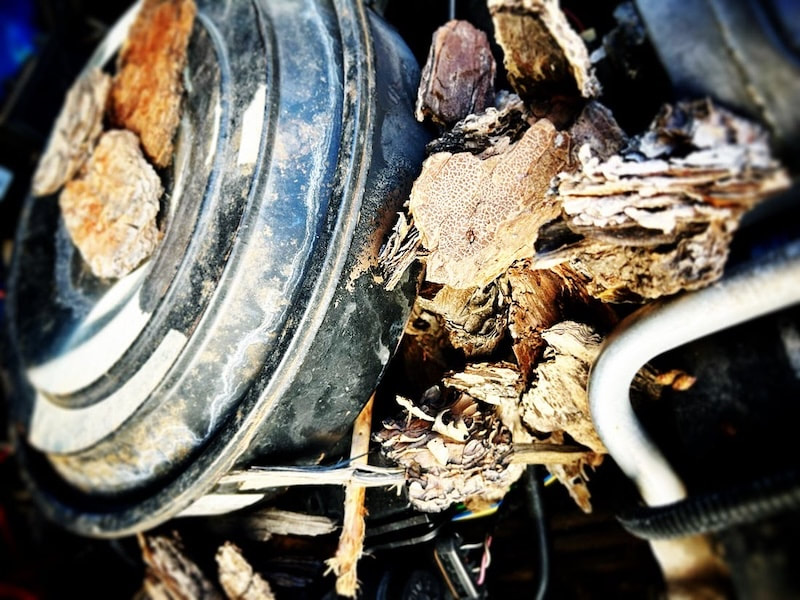

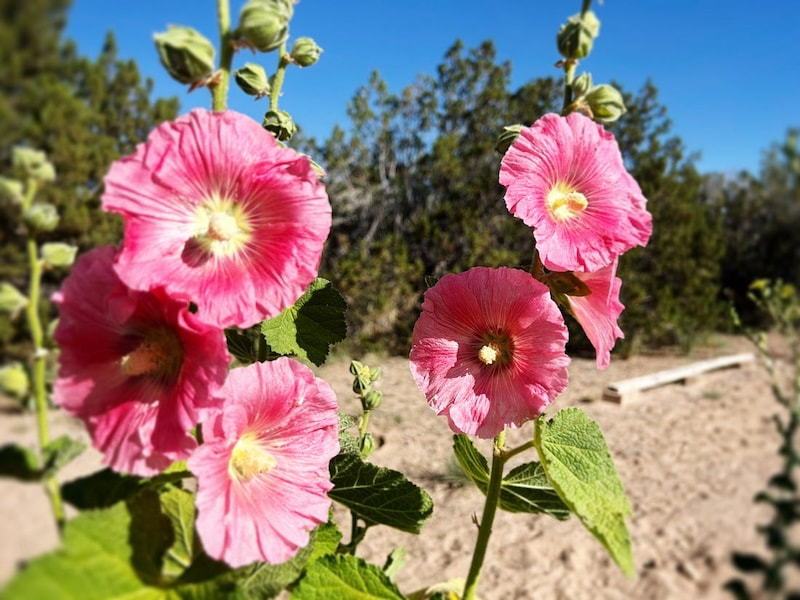



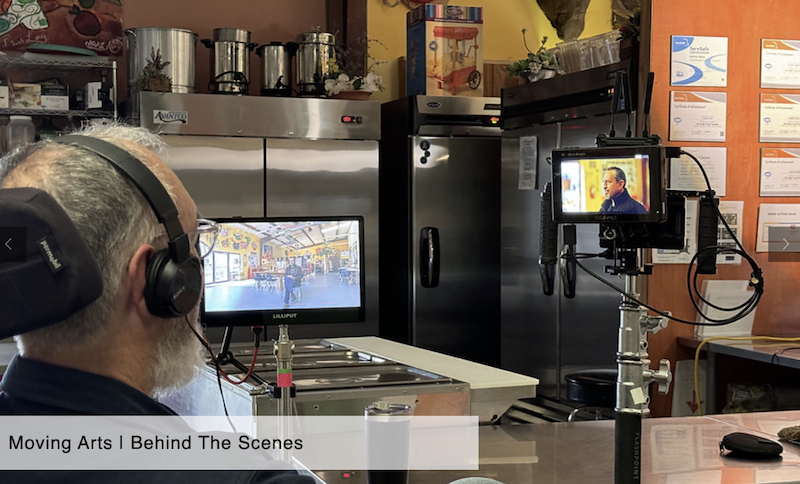

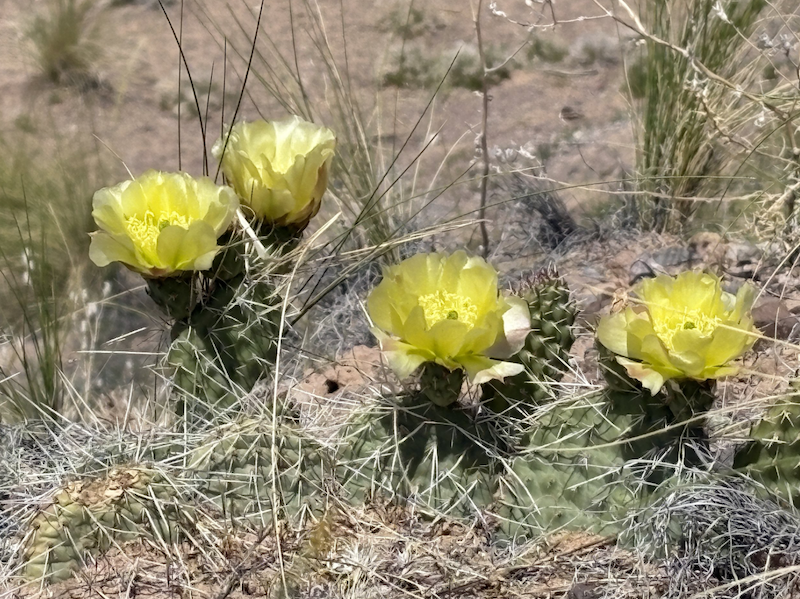



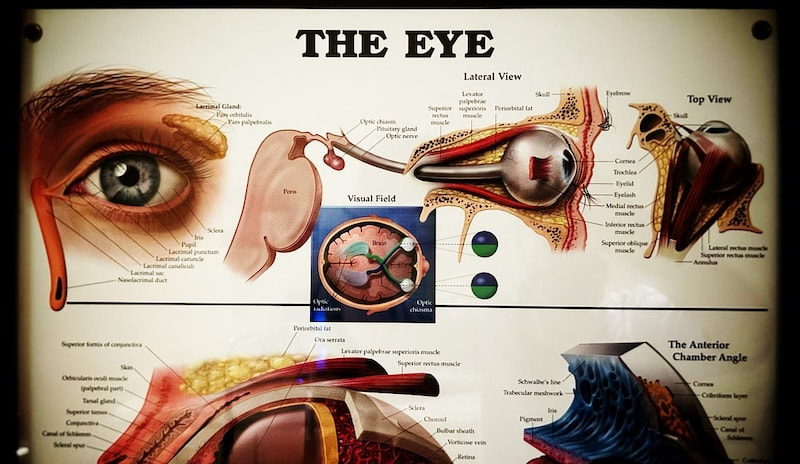

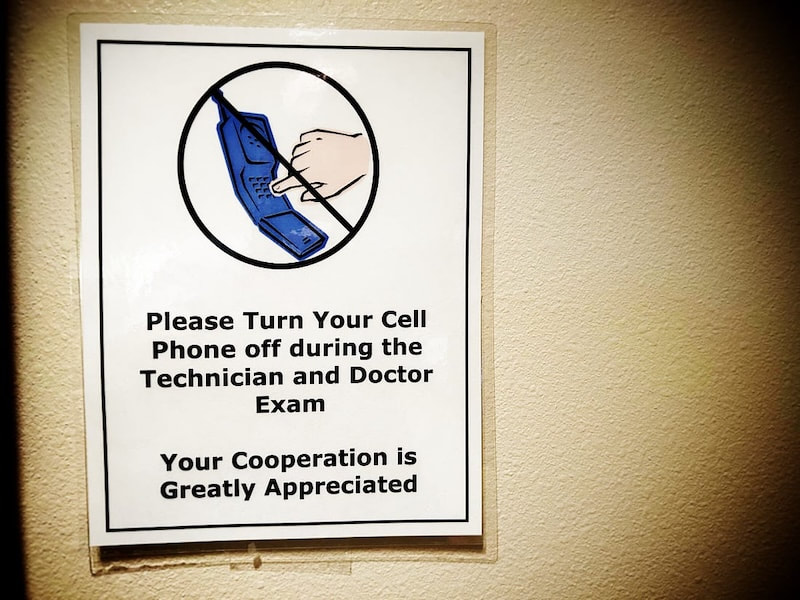


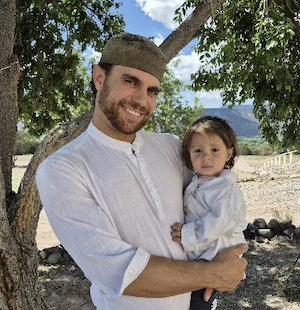
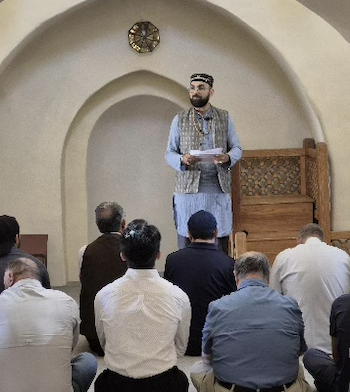
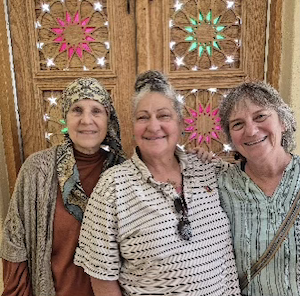
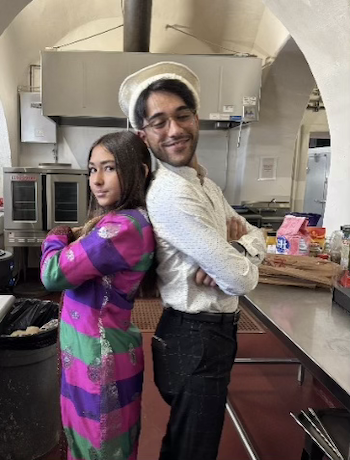
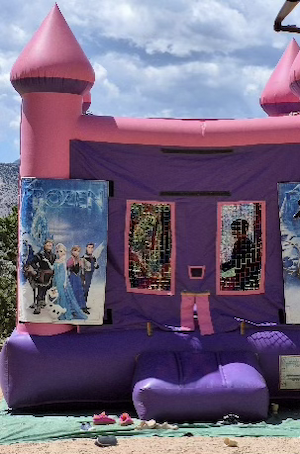
 RSS Feed
RSS Feed